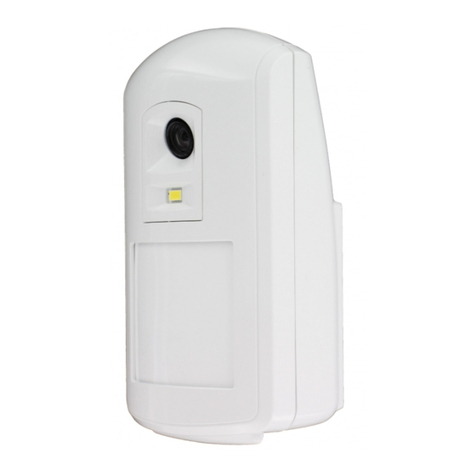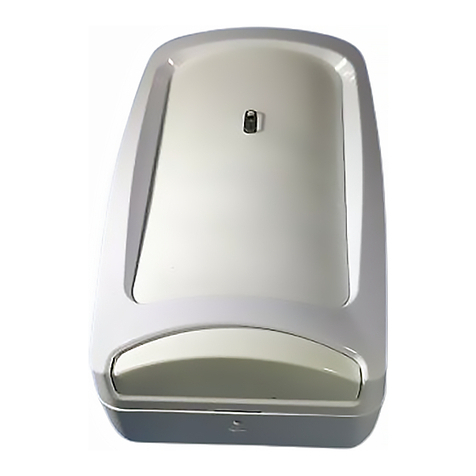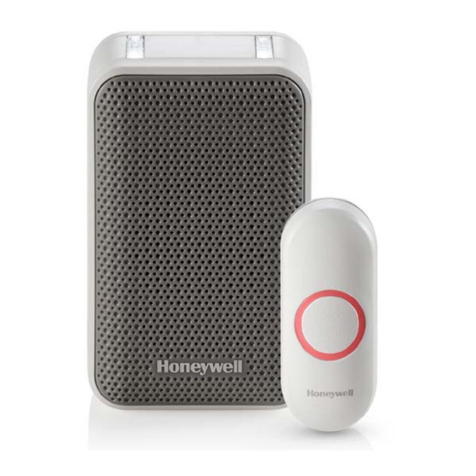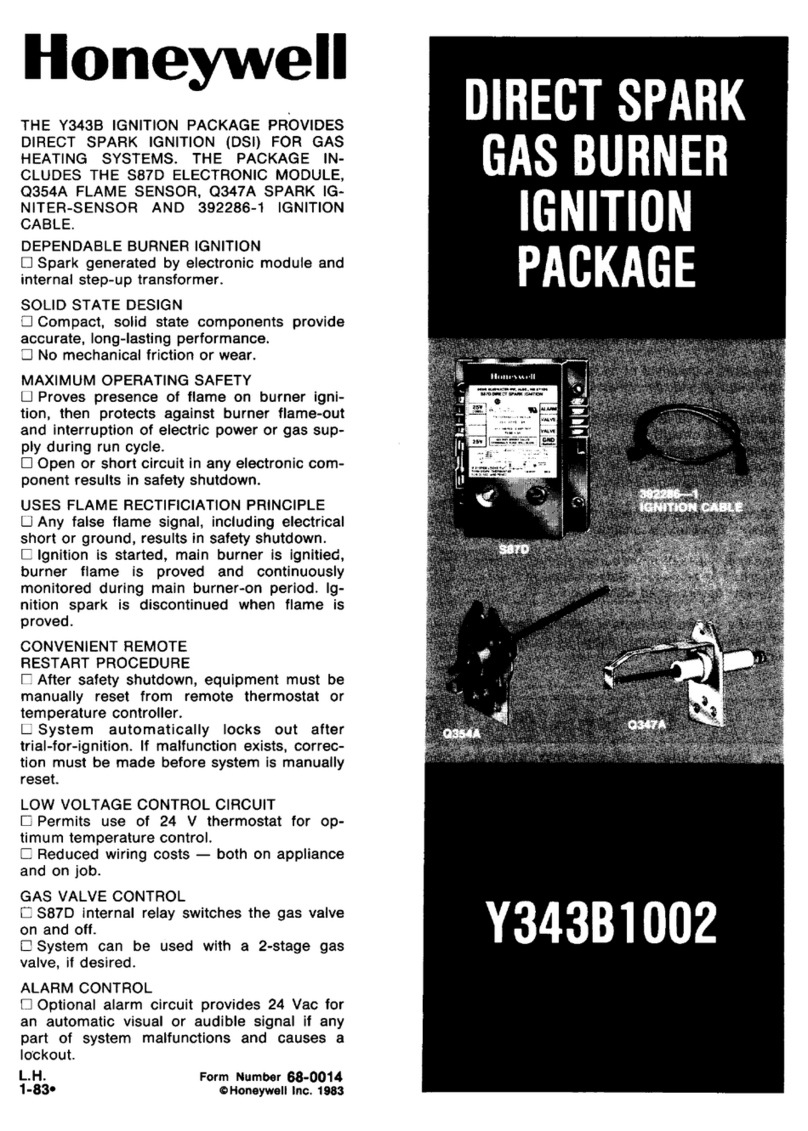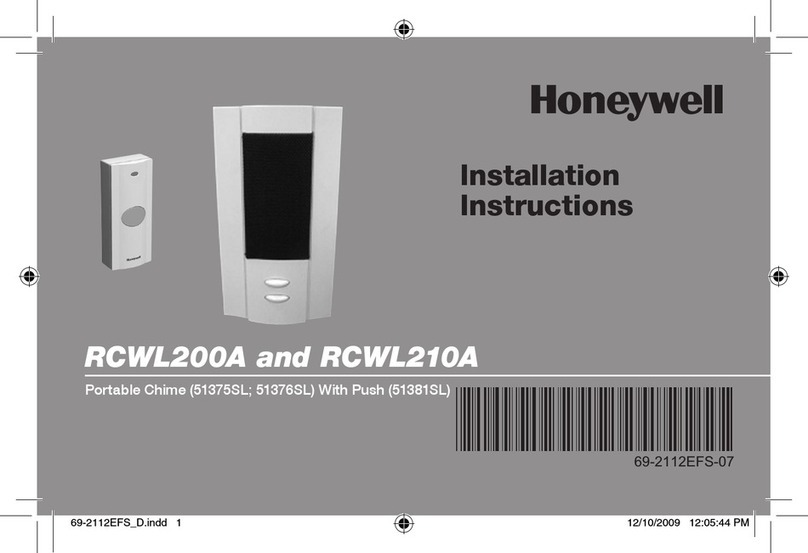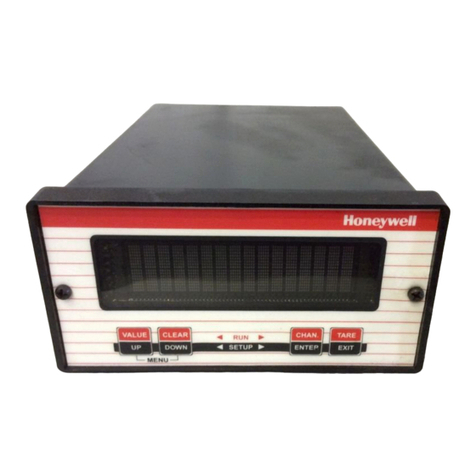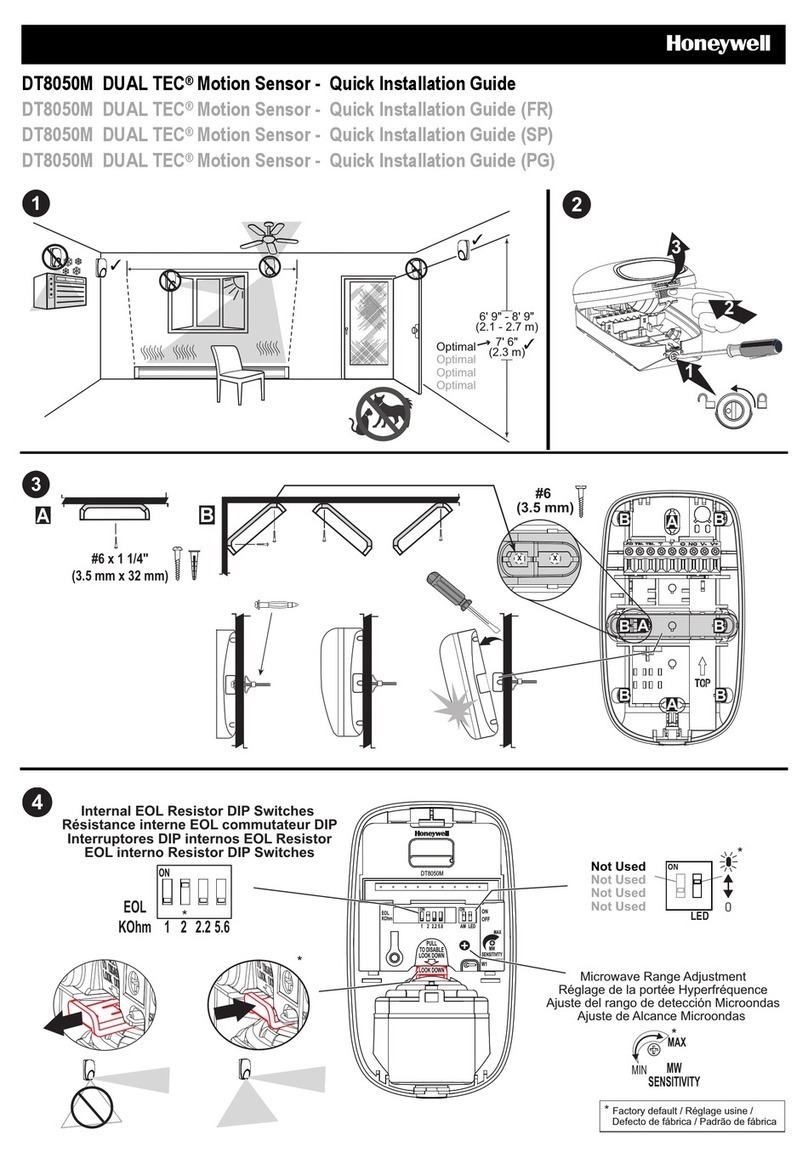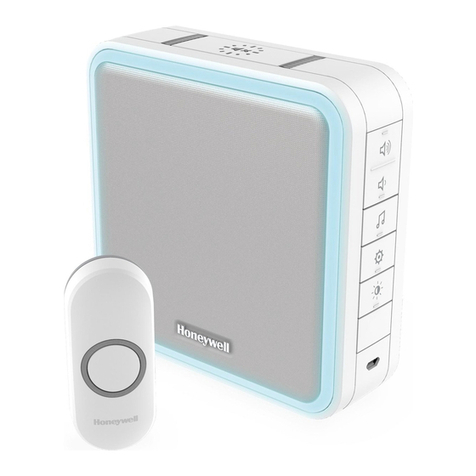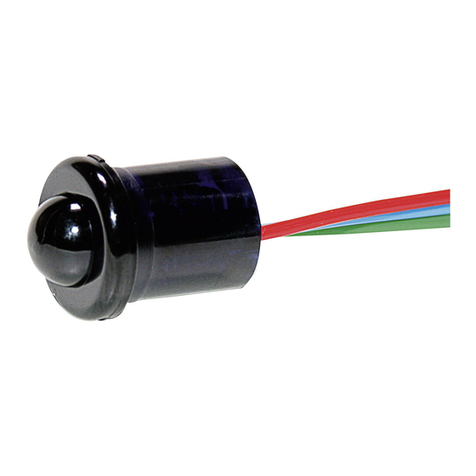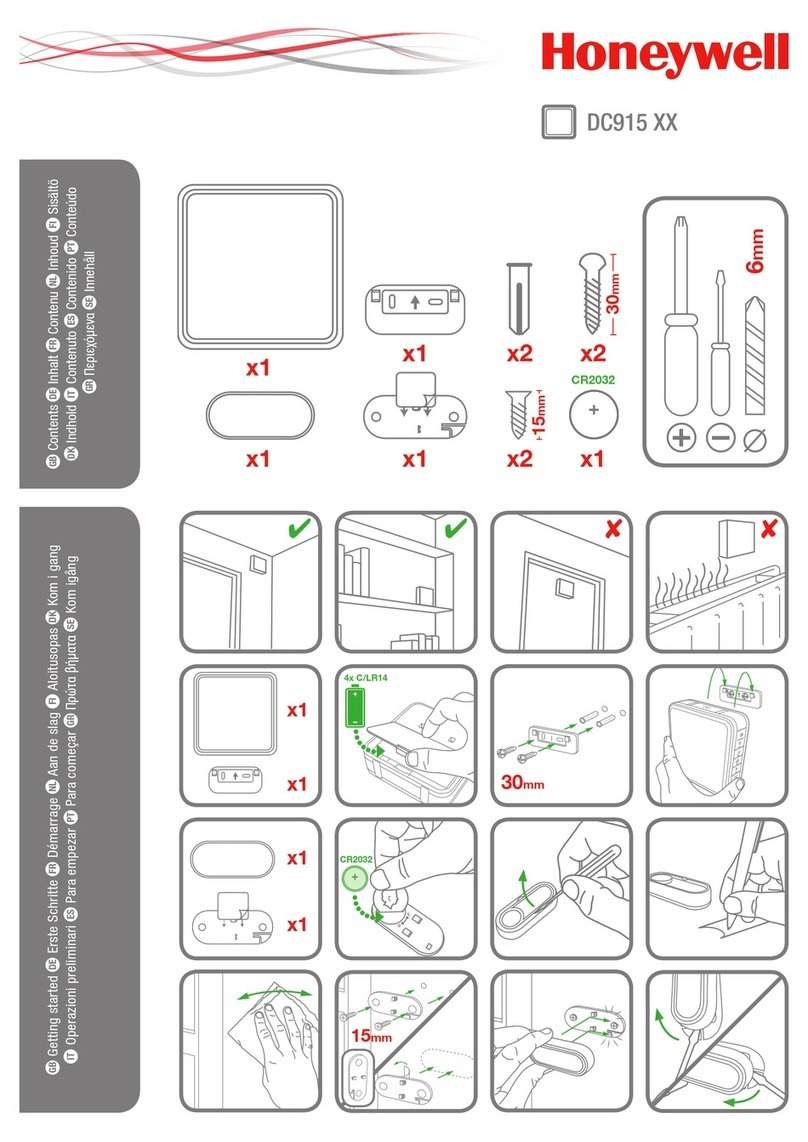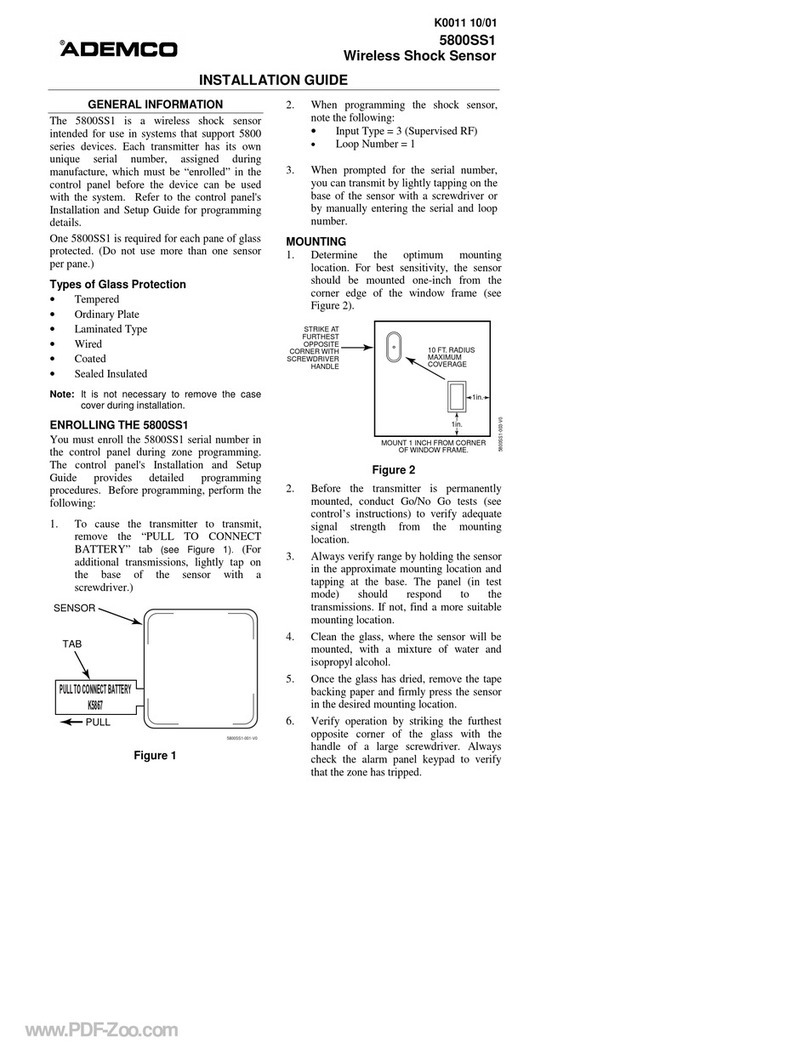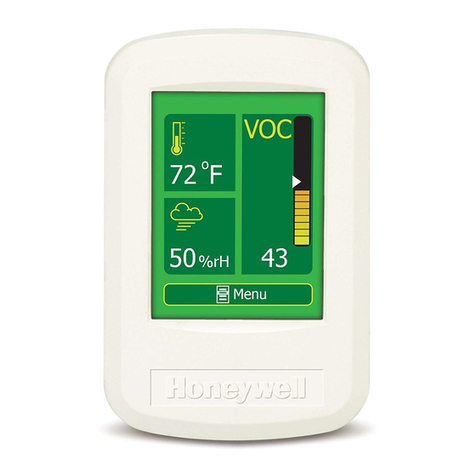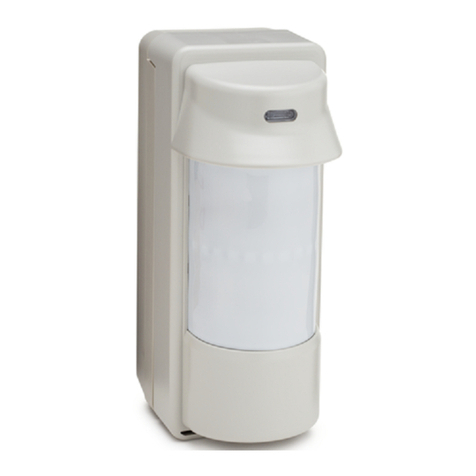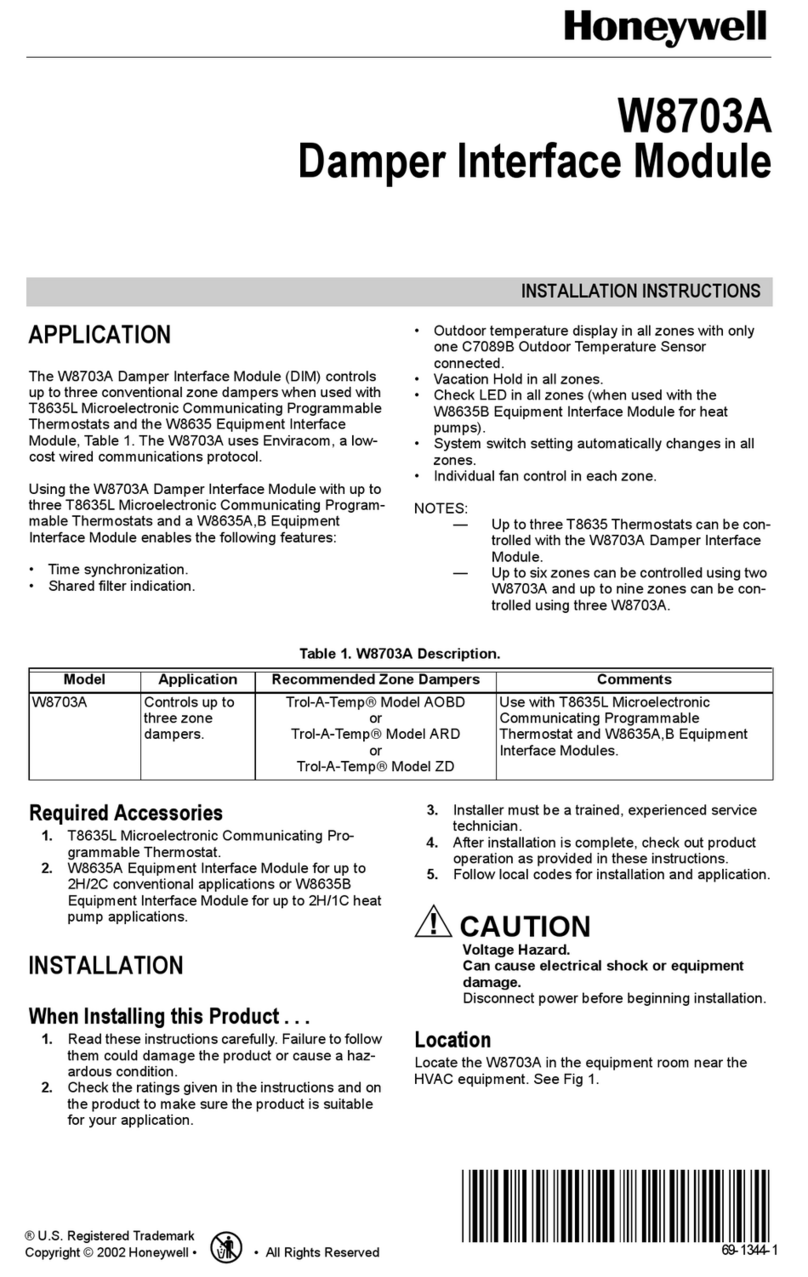
3
Select a Location and Mount the Detector
SELECT A LOCATION
•Refer to the “Specifications” topic for maximum spacing requirements.
•Avoid mounting the detector near heat generating devices (e.g.,
ovens, heat vents, furnaces, boilers).
•Wall Mounting – Mount the detector 4” to 6” from the ceiling.
•Ceiling Mounting – Mount the detector at least 4” from any wall.
Ensure the ceiling temperature will not exceed 100|F.
•Verify a good RF transmission path from the selected mounting
location before mounting. Test the detector first before mounting.
Testing The Detector:
This test should be performed to verify a good RF transmission path
before mounting the detector at the intended location, and again after
the installation is complete.
CAUTION: The heat sensor is intended for a one time use. If the
metal disc on the detector detaches, the detector must be replaced.
1. Activate the control panel’s test mode.
2. Press and release the RF TEST button on the sensor’s PC board.
3. Verify the system’s keypads beep and the detector’s serial number is
displayed.
4. Exit the control panel’s test mode.
MOUNT THE DETECTOR
The detector’s mounting base has a variety of holes to accommodate
securing it to; a wall, ceiling, 4” junction box, or a 3–1/4” octagon box.
1. Use at least two mounting holes.
2. When securing to wallboard, in addition to the mounting holes, ensure
to also use a screw in the Anti-Twist mounting hole. This will prevent
the base plate from coming loose when untwisting the sensor.
5809EN-002-V0
INDEX TAB
RECESS
INDEX TAB
RECESS
ANTI-TWIST
MOUNTING
HOLE
MOUNTING
HOLES
3. Secure the sensor to the mounting base by aligning the sensor’s index
tabs to the index tab recesses on the mounting base. While pushing
in, turn the sensor clockwise until it locks. DO NOT touch the metal
disc.
TO THE INSTALLER
Regular maintenance and inspection (at least annually) by the installer and frequent testing by the user are vital to continuous satisfactory operation
of any alarm system.
The installer should assume the responsibility of developing and offering a regular maintenance program to the user as well as acquainting the user
with the proper operation and limitations of the alarm system and its components parts. Recommendations must be included for a specific program
of frequent testing (at least weekly) to ensure the system’s proper operation at all times.
FEDERAL COMMUNICATIONS COMMISSION STATEMENT
The user shall not make any changes or modifications to the equipment unless authorized by the Installation Instructions or
User's Manual. Unauthorized changes or modifications could void the user's authority to operate the equipment.
FCC / IC STATEMENT
This device complies with Part 15 of the FCC Rules, and RSS 210 of IC. Operation is subject to the following two conditions:
(1) This device may not cause harmful interference.
(2) This device must accept any interference received, including interference that may cause undesired operation.
Cet appareil est conforme à la partie 15 des règles de la FCC & de RSS 210 des Industries Canada. Son fonctionnement est
soumis aux conditions suivantes: (1) Cet appareil ne doit pas causer d' interférences nuisibles. (2) Cet appareil doit accepter
toute interférence reçue y compris les interférences causant une réception indésirable.
R
LISTED
For Limitations of the entire alarm system, refer to the control panel’s installation guide.
WARRANTY Go to: http://www.security.honeywell.com/hsc/resources/wa/
DOCUMENTATION AND ONLINE SUPPORT Go to: http://www.security.honeywell.com/hsc/resources/MyWebTech/
Ê800-141656Š
800-14165 2/13 Rev. A
2 Corporate Center Drive, Suite 100
P.O. Box 9040, Melville, NY 11747
Copyright 2013 Honeywell International Inc.
www.honeywell.com/security
